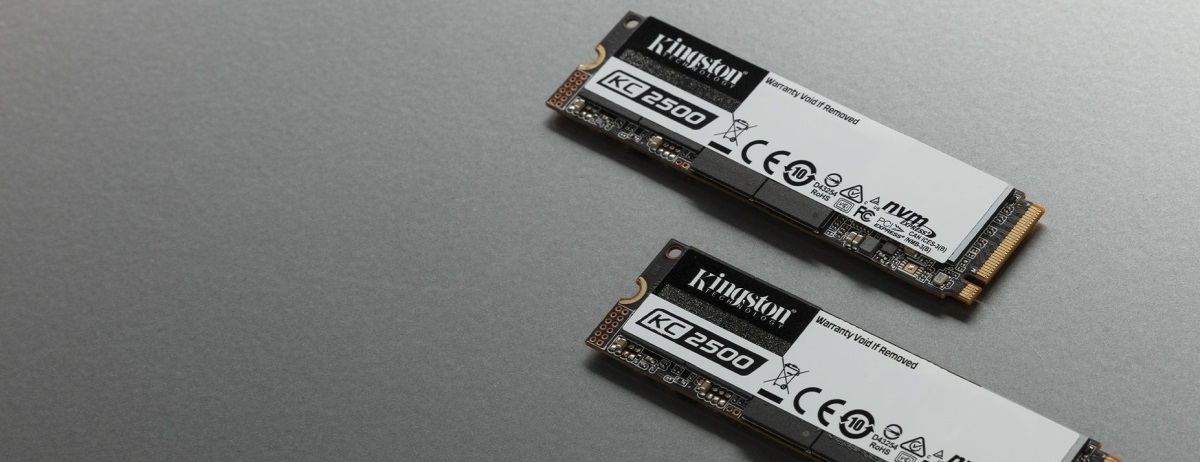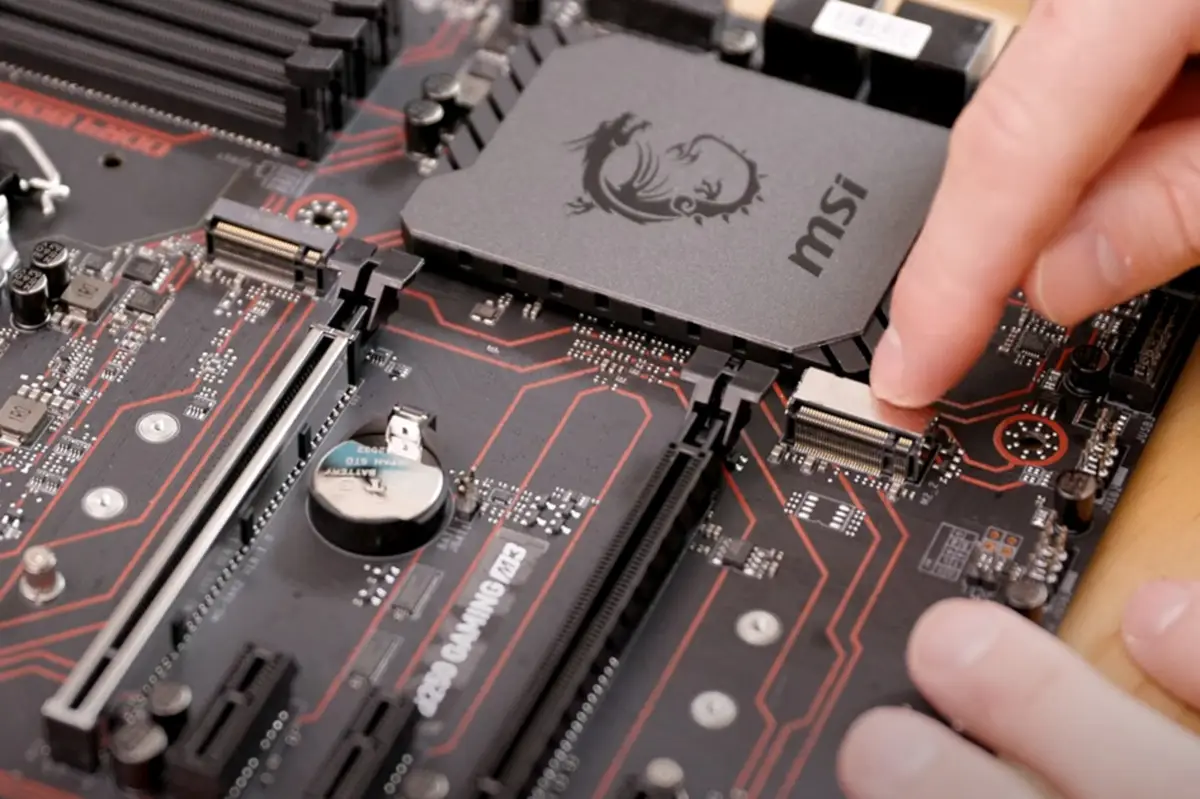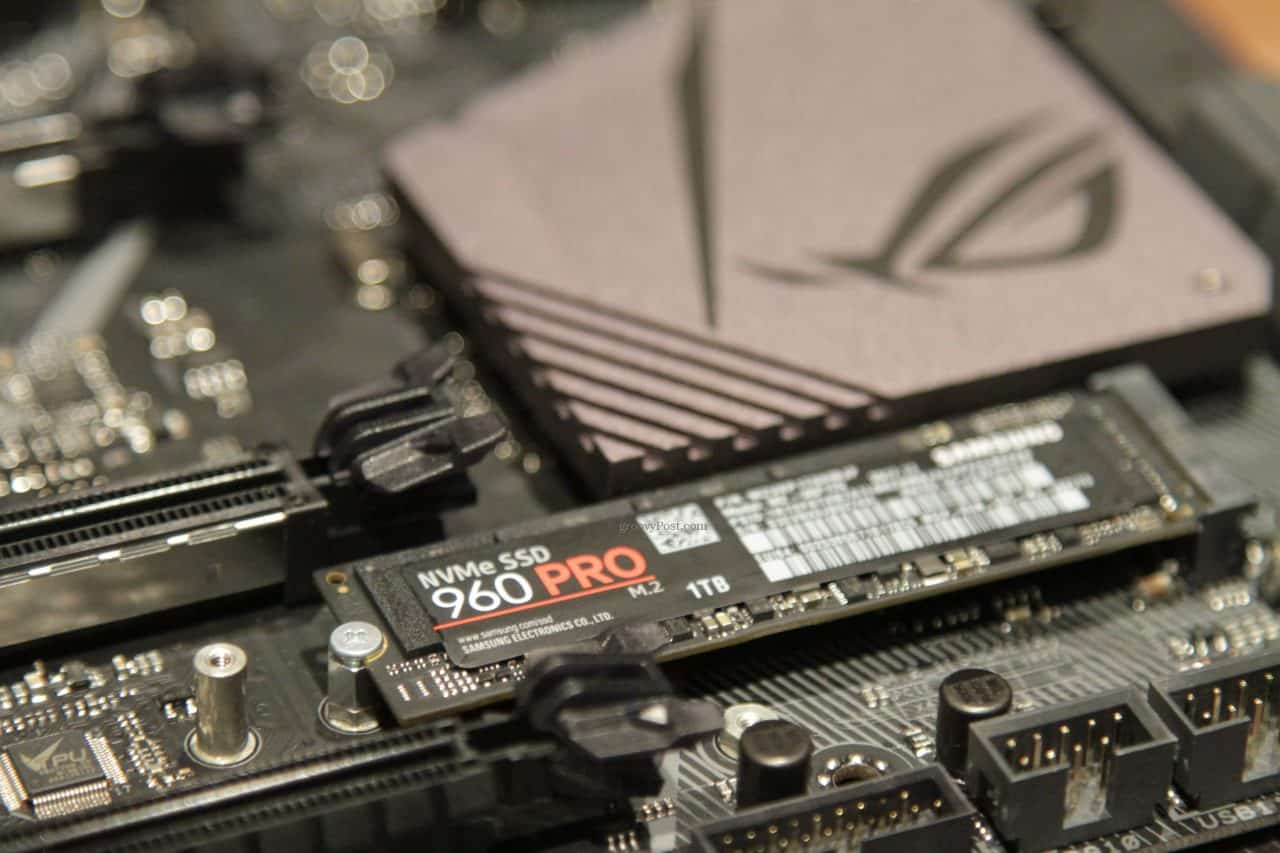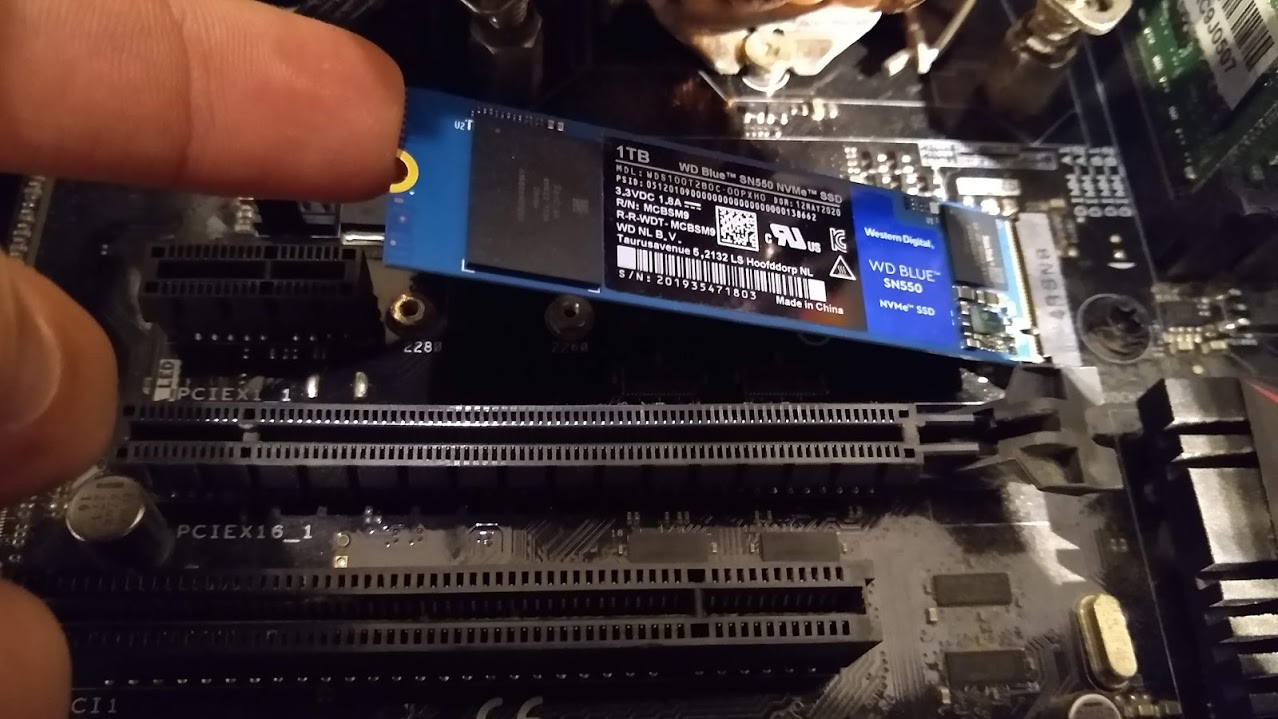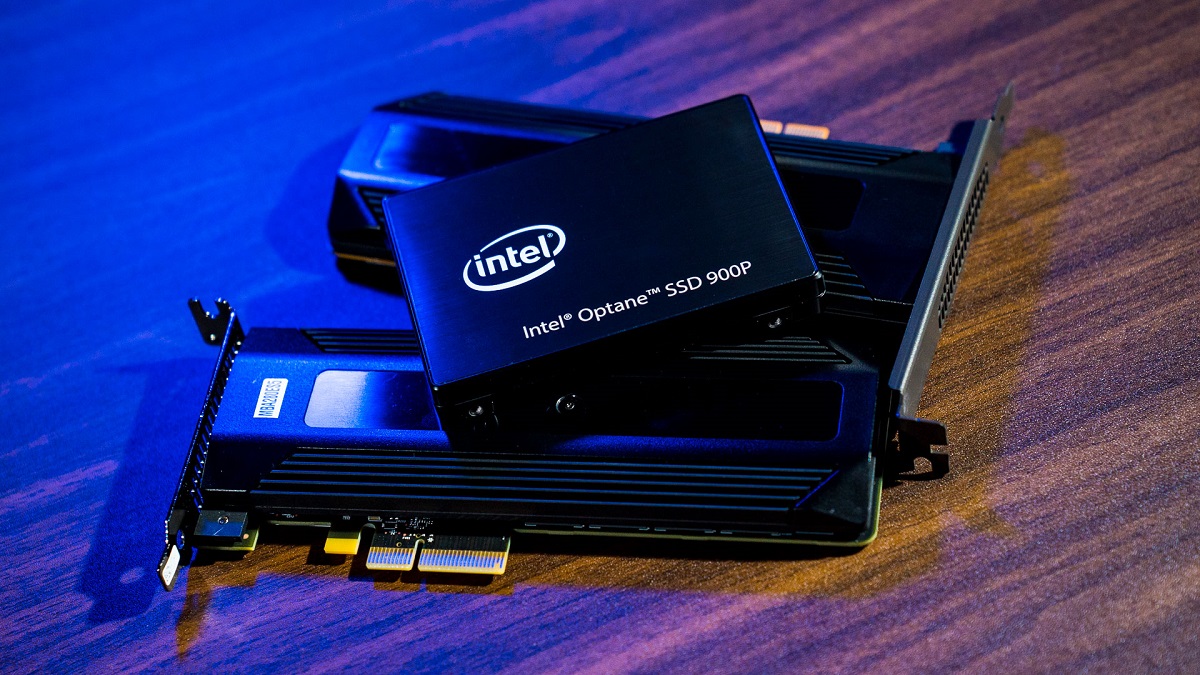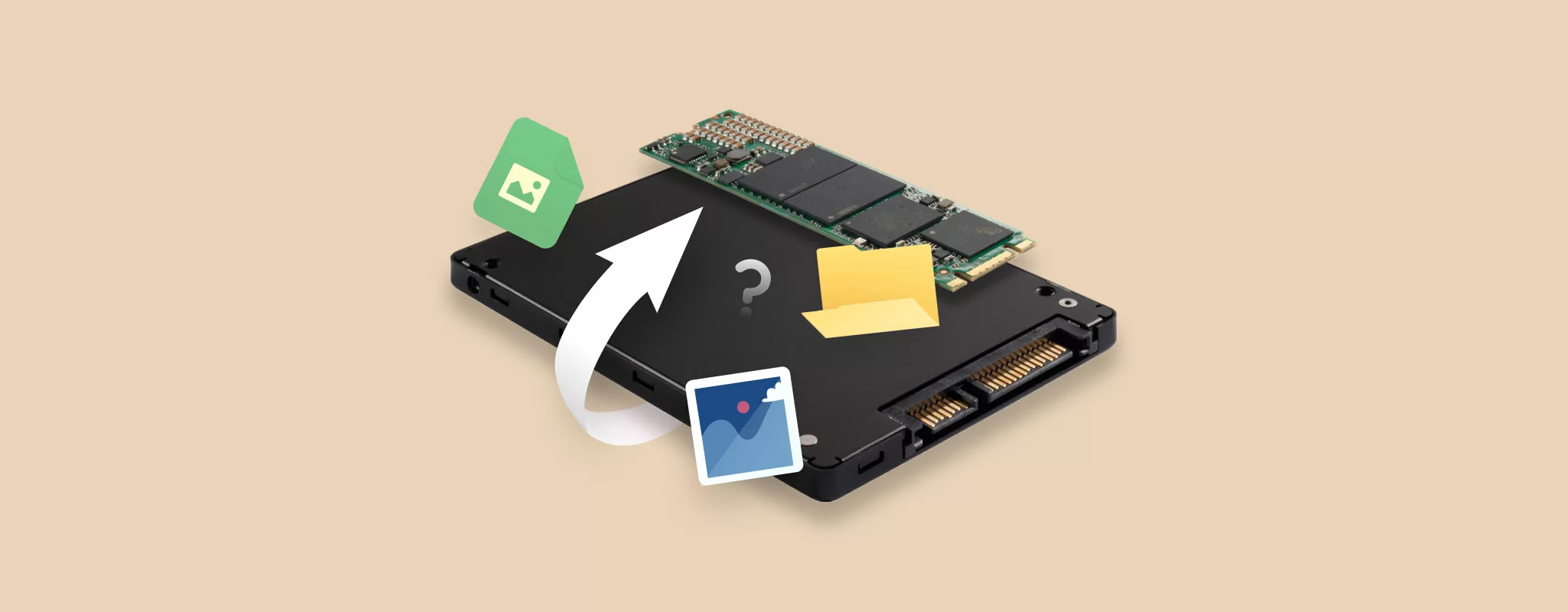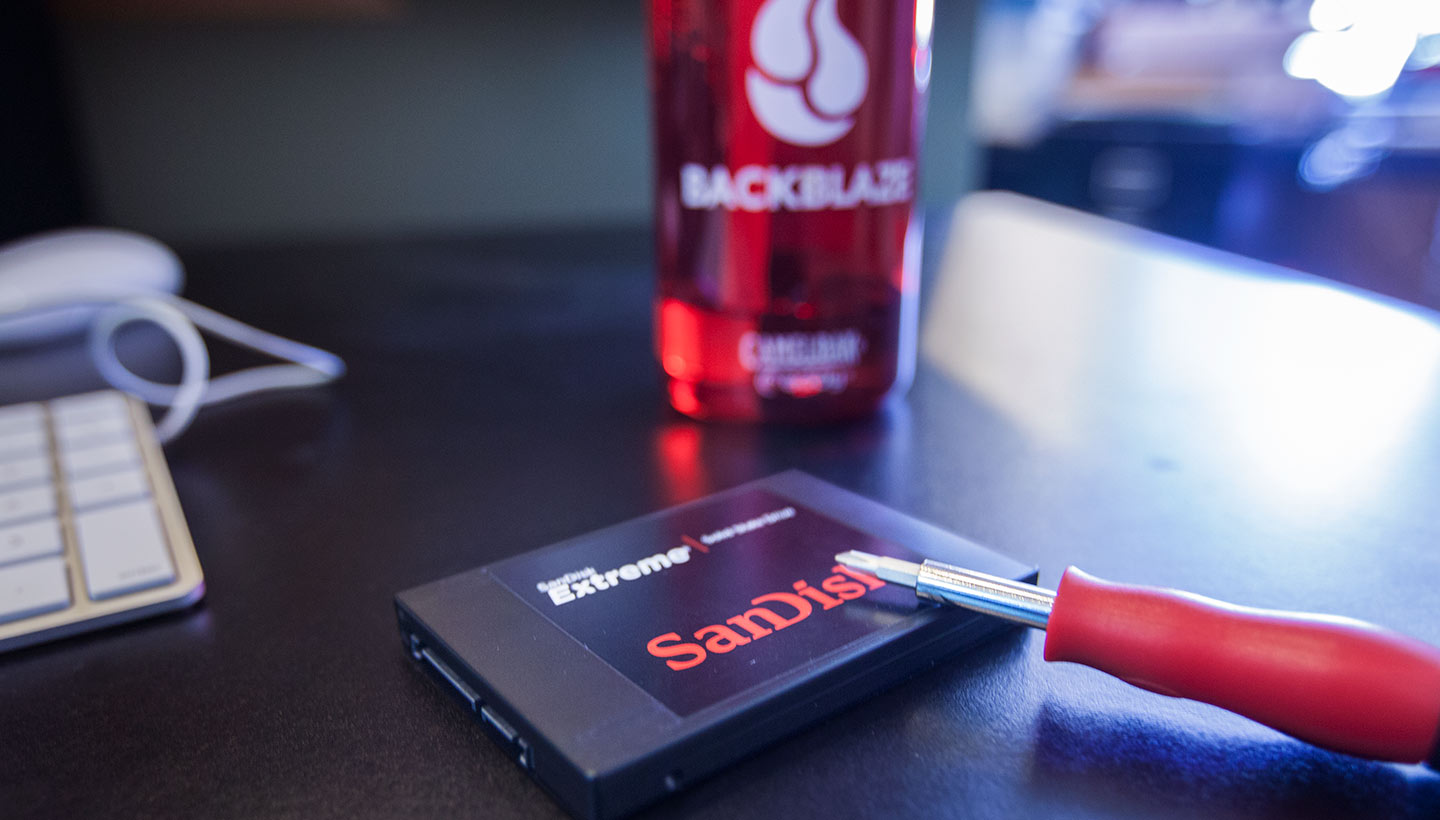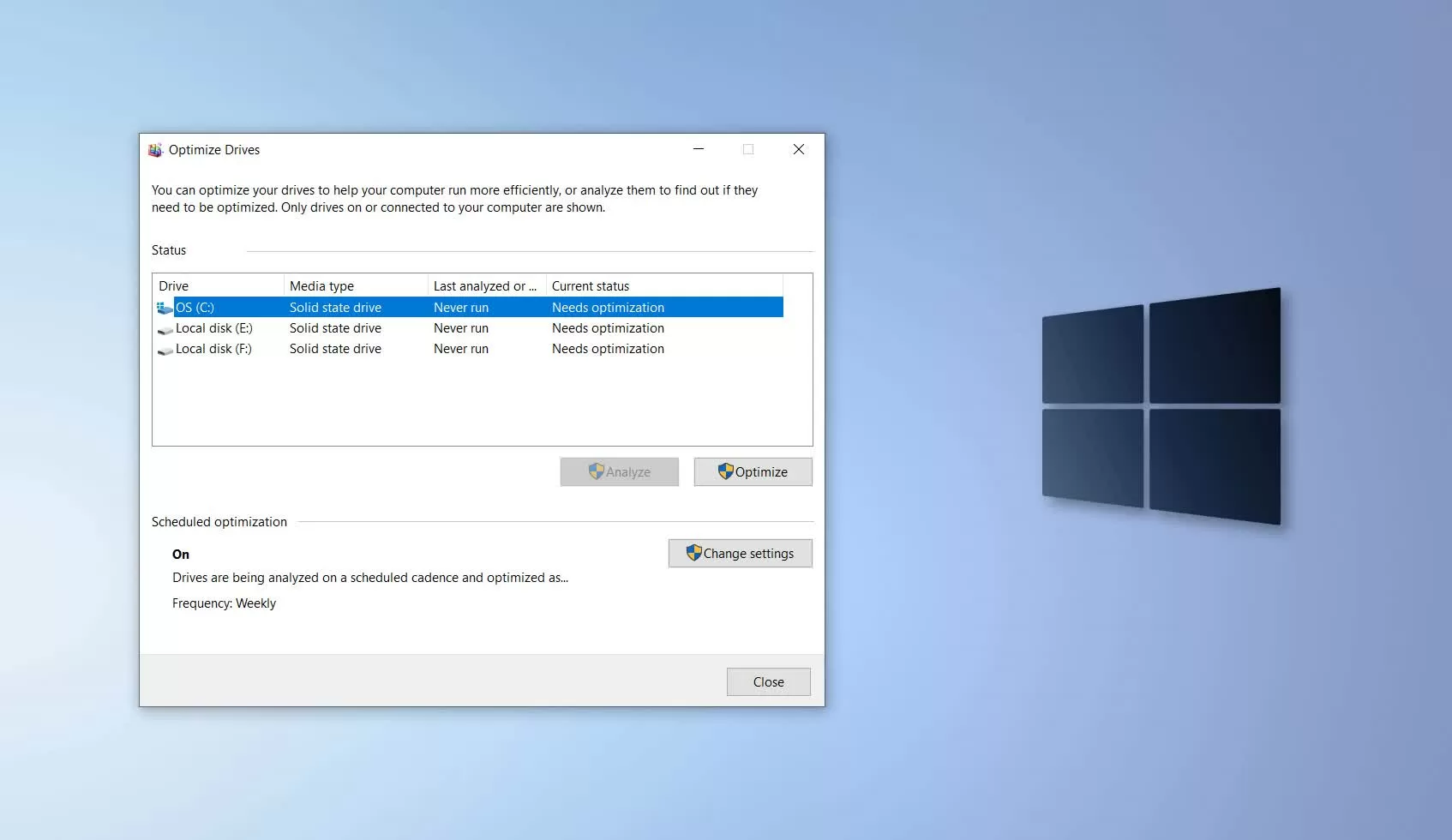Introduction
Welcome to the world of solid-state drives (SSDs), a revolutionary storage technology that has transformed the way we store and access data. Whether you’re a tech enthusiast or a casual user, understanding SSDs and their benefits is essential in staying up to date with the latest trends in computing. In this article, we will explore what SSDs are, their advantages over traditional hard disk drives (HDDs), and how to recognize them.
Gone are the days when slow-loading applications and sluggish boot times were the norm. SSDs have emerged as the go-to choice for those seeking improved performance, increased reliability, and faster data transfer speeds. These innovative storage devices have made a significant impact in various industries, from gaming and multimedia editing to corporate data centers and personal computing.
So, what exactly is an SSD? Unlike traditional HDDs that rely on spinning magnetic platters to store and retrieve data, SSDs use flash memory chips. These chips store data electronically, resulting in lightning-fast read and write speeds. The absence of moving parts also makes SSDs more durable and resistant to shocks and vibrations, enhancing their overall reliability.
The advantages of SSDs over HDDs extend beyond speed and reliability. SSDs are often smaller and lighter, making them ideal for laptops and mobile devices. They consume less power, which not only prolongs battery life but also reduces heat production, leading to quieter operation. Furthermore, SSDs generate minimal heat and produce no noise, making them a popular choice for those seeking a silent computing experience.
In the next sections, we will delve deeper into the characteristics that differentiate SSDs from HDDs. We will also explore how to identify an SSD based on physical appearance and storage capacity. Without further ado, let’s dive into the world of SSDs and unlock their potential for enhanced computing experiences.
What is an SSD?
A solid-state drive (SSD) is a type of storage device that uses flash memory chips to store and retrieve data. Unlike traditional hard disk drives (HDDs), SSDs have no moving parts, which results in faster performance, improved durability, and enhanced reliability.
The primary component of an SSD is the flash memory, which consists of NAND or NOR memory chips. These chips store data in a manner similar to how data is stored in a USB drive or an SD card. When data is written to an SSD, it is stored in these memory chips electronically, without the need for mechanical read/write heads like those in HDDs.
The absence of moving parts in SSDs leads to several advantages. First and foremost, it drastically speeds up the data transfer process. SSDs offer significantly faster read and write speeds compared to HDDs, resulting in faster boot times, quicker application launches, and overall snappier performance.
In addition to speed, SSDs are also known for their superior durability. Because there are no mechanical components that can wear out over time, SSDs are less prone to failure and can withstand shocks, vibrations, and extreme temperature variations. This makes them ideal for portable devices, such as laptops and tablets, that may be subjected to rough handling or frequent movement.
Furthermore, SSDs consume less power compared to HDDs, which can have a significant impact on battery life. With their lower power requirements, SSDs help to extend the battery life of laptops and other portable devices, enabling users to work or enjoy multimedia content for longer periods without needing to recharge.
Overall, SSDs provide a multitude of benefits over traditional HDDs. Their faster performance, increased durability, lower power consumption, and compact size have made them the preferred choice for not only personal computers but also various other devices, including gaming consoles, smartphones, and data centers.
In the next section, we will explore the key differences between SSDs and HDDs, shedding light on why SSDs have become the storage medium of choice for many users.
Why are SSDs beneficial?
Solid-state drives (SSDs) offer numerous benefits that make them a highly desirable storage solution in today’s digital landscape. From improved performance to enhanced reliability, let’s explore why SSDs are so beneficial.
One of the key advantages of SSDs is their lightning-fast speed. Compared to traditional hard disk drives (HDDs), SSDs provide significantly faster read and write speeds. This translates into faster boot times, quicker application launches, and reduced loading times for files and programs. Tasks that used to take minutes can now be completed in a matter of seconds, resulting in a smoother and more efficient user experience.
The absence of moving parts in SSDs contributes to their exceptional performance. Unlike HDDs, which use spinning disks and mechanical read/write heads to access data, SSDs store and retrieve data electronically from flash memory chips. This eliminates the delays caused by physical movement, leading to near-instantaneous data access.
Furthermore, SSDs are highly reliable and durable. Since they don’t have mechanical components that can fail over time, SSDs are more resistant to shocks, vibrations, and temperature variations. This makes them less prone to physical damage and data loss caused by accidents or rough handling. With an SSD, you can feel confident that your valuable data is safer and more secure.
In addition to enhanced performance and reliability, SSDs are also more power-efficient. Compared to HDDs, which require motors and other components to spin the disks, SSDs consume less power. This not only leads to longer battery life in laptops and mobile devices but also reduces heat generation and noise. SSDs provide a quieter and cooler computing environment, making them particularly appealing to those who value a silent and energy-efficient setup.
Another advantage of SSDs is their compact size and lightweight design. Due to the absence of large spinning disks, SSDs can be made much smaller and thinner than traditional HDDs. This makes them an ideal choice for slim and lightweight devices like ultrabooks, tablets, and smartphones, where space is often limited. SSDs allow for sleeker and more portable devices without sacrificing storage capacity or performance.
These benefits make SSDs highly versatile and valuable across a wide range of applications. From home users looking for faster and more responsive systems to professionals requiring reliable and efficient storage for their critical work, SSDs have become the go-to choice for those seeking enhanced performance and reliability.
In the next section, we will compare SSDs and HDDs in more detail, highlighting the major differences between these two storage technologies.
SSD vs HDD: What’s the difference?
When it comes to storage technology, the two main options to consider are solid-state drives (SSDs) and hard disk drives (HDDs). While both serve the purpose of storing data, there are significant differences between the two. Let’s explore the key distinctions and understand why SSDs have emerged as the preferred choice in recent years.
One of the most prominent differences between SSDs and HDDs lies in their internal mechanisms. HDDs store data on spinning magnetic platters and use mechanical read/write heads to access the data. The spinning motion and the mechanical nature of HDDs introduce several limitations, including slower data transfer speeds and susceptibility to mechanical failures.
On the other hand, SSDs utilize flash memory chips to store data. These chips have no moving parts, resulting in significantly faster data access and transfer speeds. Without the need for mechanical movement, SSDs can deliver near-instantaneous data retrieval, making them ideal for tasks that require high-speed storage, such as operating systems, software applications, and multimedia files.
Another crucial difference between SSDs and HDDs is their level of reliability and durability. HDDs are more prone to failure and data loss due to their mechanical components. The spinning disks are vulnerable to shocks and vibrations, and the read/write heads can become misaligned or damaged. In contrast, SSDs have no moving parts, making them more resistant to physical shock and better equipped to handle rough handling or accidental drops.
Additionally, SSDs have a longer lifespan compared to HDDs. The continuous spinning of HDD platters over time can degrade the physical components and lead to mechanical failures. In contrast, SSDs can endure a greater number of data write cycles, providing greater longevity and reliability.
In terms of power consumption, SSDs offer a significant advantage over HDDs. Since SSDs do not require mechanical components to operate, they consume less power during both active and idle states. This energy efficiency translates into longer battery life for laptops and a reduction in overall electricity consumption.
While SSDs offer numerous advantages over HDDs, there is one area where HDDs still hold an edge – cost per storage capacity. HDDs are generally more cost-effective when it comes to storing large amounts of data. However, as technology advances and SSD production becomes more streamlined, the price difference between SSDs and HDDs continues to diminish.
Considering the faster performance, enhanced durability, and power efficiency of SSDs, they have become the storage medium of choice for many users today. From everyday computing tasks to intensive workloads, SSDs provide the speed and reliability needed to optimize productivity and enhance user experience.
In the following sections, we will explore how to recognize an SSD based on its common characteristics and physical appearance, as well as methods to check the storage capacity of an SSD. Let’s dive deeper into the world of SSDs and uncover their unique features.
How to Recognize an SSD
Recognizing an SSD is essential, especially when you need to identify the type of storage device in your computer or other electronic devices. Here are some key indicators that can help you identify whether a device has an SSD or not.
One of the easiest ways to recognize an SSD is by observing the speed of the device. SSDs are known for their lightning-fast performance, providing quicker boot times and faster application launches. If your device starts up promptly and applications open without delay, there’s a good chance that it is equipped with an SSD.
Another characteristic to look for is the absence of noise. Unlike traditional hard disk drives (HDDs), SSDs have no moving parts, which means they operate silently. If your device remains quiet even during heavy usage or when accessing large files, it’s likely that it is using an SSD.
Size and weight can also be indicators. SSDs are generally smaller and lighter than HDDs due to their lack of spinning disks and mechanical components. If your device is slim and lightweight, it’s more likely to have an SSD rather than an HDD. This is especially common in ultrabooks, tablets, and other portable devices where space and weight are crucial factors.
Physical appearance can also provide clues. In most cases, SSDs are rectangular in shape with a slim profile. They typically feature a metal casing, although some may be encased in plastic. However, it’s important to note that the appearance can vary depending on the manufacturer and form factor of the SSD.
Checking the device’s storage capacity can also help determine if it has an SSD. SSDs generally have larger storage capacities compared to HDDs. If your device has a high storage capacity, it is more likely to be equipped with an SSD. However, it’s important to keep in mind that storage capacity alone is not a definitive indicator, as HDDs with high capacities are also available in the market.
One method to further confirm if a device has an SSD is to check the specifications or documentation provided by the manufacturer. This information usually lists the type of storage technology used, confirming whether it is an SSD or an HDD.
In summary, recognizing an SSD can be done by looking at the device’s speed, noise level, size, weight, physical appearance, storage capacity, and checking the manufacturer’s specifications. By considering these factors, you can easily identify whether your device is equipped with an SSD or not.
In the following sections, we will explore the common characteristics of an SSD and delve into the physical appearance and storage capacity of SSDs in more detail. Let’s continue our journey of understanding SSDs and how they differ from other storage devices.
Common Characteristics of an SSD
Solid-state drives (SSDs) have distinct features and characteristics that set them apart from traditional hard disk drives (HDDs). Understanding these common characteristics can help you identify and differentiate an SSD from other storage devices. Let’s explore some of the key characteristics of an SSD.
First and foremost, SSDs are known for their superior speed and performance. Unlike HDDs, which rely on spinning disks and mechanical read/write heads, SSDs use flash memory chips to store and retrieve data. This enables much faster data access and transfer speeds, resulting in quicker boot times, faster application launches, and overall snappier system performance.
In terms of reliability, SSDs outshine HDDs. With no moving parts, SSDs are more resistant to physical shocks, vibrations, and temperature variations, making them less prone to failures and data loss due to mechanical issues. This enhanced durability is particularly beneficial for portable devices that may experience rough handling or accidental drops.
Another important characteristic of SSDs is their power efficiency. Unlike HDDs that require motors and spinning disks, SSDs consume less power during both active and idle states. This not only prolongs battery life in laptops and other mobile devices but also reduces overall energy consumption, leading to a more sustainable and eco-friendly computing experience.
SSDs also provide consistent performance over time, regardless of data fragmentation. This is because SSDs do not suffer from the same performance degradation as HDDs, which can experience slower read and write speeds as data becomes fragmented on the magnetic platters. With an SSD, you can expect reliable and consistent performance throughout the lifespan of the device.
Furthermore, SSDs operate silently without generating any noise. As there are no moving parts involved in data access, SSDs provide a noise-free computing experience. This is especially appreciated in quiet environments or for individuals who prefer a peaceful and distraction-free computing environment.
In terms of form factor, SSDs are available in various shapes and sizes. The most common form factor is the 2.5-inch drive, which is similar in size to a traditional laptop HDD. However, SSDs also come in other form factors such as M.2 and PCIe expansion cards, which are smaller and more compact. These smaller form factors make SSDs ideal for use in ultrabooks, tablets, and other slim-profile devices.
Overall, the common characteristics of SSDs include superior speed and performance, enhanced reliability, power efficiency, consistent performance regardless of data fragmentation, silent operation, and availability in various form factors. By recognizing these attributes, you can easily identify an SSD and reap the benefits of this advanced storage technology.
In the next section, we will delve into the physical appearance of an SSD, exploring the external features and design elements that distinguish it from other storage devices.
Physical Appearance of an SSD
Solid-state drives (SSDs) have a distinct physical appearance that sets them apart from traditional hard disk drives (HDDs). By understanding the external features and design elements of an SSD, you can easily identify and differentiate it from other storage devices. Let’s explore the physical appearance of an SSD in detail.
SSDs typically come in a rectangular shape with a slim profile. The size of an SSD can vary depending on the form factor, but the most common size is the 2.5-inch drive, which is similar in size to a traditional laptop HDD. This size is designed to fit into standard drive bays and is widely compatible with various devices.
The casing of an SSD is often made of metal, such as aluminum, which provides both protection and heat dissipation. This metal casing helps to safeguard the delicate internal components of the SSD, ensuring durability and reliability. However, some SSDs may also be encased in plastic, which can be lighter and more cost-effective.
On the top surface of an SSD, you will typically find a label or badge that displays essential information such as the brand, model, and capacity. This label serves as a quick reference to identify the specific SSD and its specifications. It may also include additional details such as the serial number and firmware version.
In terms of connectivity, SSDs feature a SATA or NVMe interface. The SATA interface is widely used in traditional SSDs, offering fast data transfer speeds and easy compatibility with most computers. On the other hand, NVMe (Non-Volatile Memory Express) is a newer and faster interface that is commonly found in high-performance SSDs. It is designed to take full advantage of the speed capabilities of SSDs, providing blazing-fast data transfer rates.
Additionally, modern SSDs may have various LED indicators embedded in the casing. These LEDs serve as status indicators, providing visual feedback on the SSD’s activity or health status. For example, they may indicate power on/off, data transfer activity, or the presence of errors. These LED indicators can be useful for monitoring the performance and operation of the SSD.
It’s important to note that the physical appearance of an SSD can vary depending on the manufacturer and form factor. While the most common form factor is the 2.5-inch drive, there are also smaller and more compact form factors such as M.2 and PCIe expansion cards. These smaller form factors are popular in ultrabooks, tablets, and other slim-profile devices where space is limited.
By recognizing the physical appearance of an SSD, including its rectangular shape, metal or plastic casing, label, SATA or NVMe interface, and potential LED indicators, you can easily identify and distinguish an SSD from other storage devices. This knowledge will enable you to make informed decisions when purchasing, upgrading, or troubleshooting your computer’s storage.
In the next section, we will explore methods to check the storage capacity of an SSD, helping you determine the amount of storage available on the device.
Checking the Storage Capacity of an SSD
Determining the storage capacity of a solid-state drive (SSD) is essential when it comes to managing and organizing your data effectively. Checking the storage capacity of an SSD is a straightforward process that can be done through various methods. Let’s explore some of the common methods to check the storage capacity of an SSD.
The most direct approach to check the storage capacity of an SSD is to view its properties or specifications on your computer’s operating system. For Windows users, you can right-click on the SSD drive icon and select “Properties.” This will display a window showing the total capacity of the drive, as well as the amount of space used and the amount available.
Similarly, Mac users can navigate to the “About This Mac” section and click on the “Storage” tab. Here, you will see a breakdown of your storage devices, including the SSD. The storage capacity of the SSD will be displayed, along with the amount of space used and free space.
You can also check the storage capacity of an SSD by using third-party software. There are numerous disk management and monitoring tools available that provide detailed information about your storage devices. These software programs often display the storage capacity, health status, and other relevant data of the SSD in a user-friendly interface.
If you prefer a more physical approach, you can look for the storage capacity information printed on the label or badge of the SSD itself. As mentioned earlier, SSDs typically have a label on the top surface that shows important details, including the storage capacity. It is usually stated in gigabytes (GB) or terabytes (TB), indicating the amount of data that can be stored on the drive.
In some cases, the storage capacity of an SSD may also be mentioned in the product documentation provided by the manufacturer. If you have access to the user manual or product specifications, you can consult these resources to find the exact storage capacity of the SSD.
Keep in mind that the advertised storage capacity of an SSD may not correspond exactly to the amount of usable space. A small portion of the overall capacity is reserved for the SSD’s firmware and maintenance tasks, which means that the available capacity for user data may be slightly less.
By using these methods to check the storage capacity of an SSD, you can easily determine the amount of space available for your files and applications. This knowledge allows you to effectively manage and optimize the usage of your SSD, ensuring that you make the most out of its storage capabilities.
In the next section, we will explore how to identify SSDs in different devices, including laptops, desktops, and other electronic devices.
Identifying SSDs in Different Devices
Solid-state drives (SSDs) can be found in a wide range of devices, including laptops, desktops, gaming consoles, and other electronic devices. Identifying whether a particular device has an SSD or not can be helpful when upgrading, troubleshooting, or understanding the storage capabilities of the device. Let’s explore how to identify SSDs in different devices.
Laptops: Most modern laptops come equipped with SSDs due to their speed, reliability, and power efficiency. One of the easiest ways to identify an SSD in a laptop is by checking the specifications provided by the manufacturer. The model name or number usually includes the term “SSD” if the device is equipped with one. Additionally, many laptops have a removable access panel on the bottom where you can physically inspect and identify the SSD. The label on the SSD or the model number printed on the device can confirm if it is an SSD.
Desktops: Desktop computers can have multiple storage drives, including both SSDs and HDDs. To identify the SSD in a desktop, you can open the computer’s case and visually inspect the drives. SSDs typically have a rectangular shape and lack the spinning disks found in HDDs. The drive may also have a label or badge indicating the storage capacity and other specifications. If your computer has multiple drives, the SSD is likely to be the primary drive where the operating system is installed.
Gaming Consoles: Some gaming consoles, such as the Sony PlayStation 5, have started incorporating SSDs as their primary storage. To identify the presence of an SSD in a gaming console, you can refer to the manufacturer’s specifications or documentation. Additionally, some gaming consoles have removable storage expansion slots where you can physically install an SSD for additional storage capacity.
Other Electronic Devices: SSDs can be found in various other electronic devices, including tablets, smartphones, cameras, and portable media players. These devices may not always have removable storage but instead have the SSD integrated directly onto the device’s circuit board. Checking the specifications or documentation provided by the manufacturer can confirm the presence of an SSD in these devices.
It’s important to note that not all devices may have easily accessible or removable storage. In such cases, identifying the exact type of storage may require more in-depth research or consulting the manufacturer’s documentation or support channels.
By using the methods mentioned above, you can successfully identify whether a device has an SSD or not. This knowledge enables you to make informed decisions about upgrades, troubleshooting, or managing device storage effectively.
In the next section, we will summarize the key points covered in this article and reinforce the importance of recognizing and understanding SSDs in the ever-evolving digital landscape.
Conclusion
Solid-state drives (SSDs) have revolutionized the world of storage with their exceptional speed, reliability, and compact design. In this article, we explored what SSDs are, their benefits over traditional hard disk drives (HDDs), and how to recognize them in different devices. We learned that SSDs use flash memory chips instead of spinning disks, resulting in faster data access, improved durability, lower power consumption, and silent operation.
Recognizing an SSD is essential to fully leverage the advantages it offers. We discussed various methods to identify an SSD, including observing its speed and noise level, inspecting its physical appearance and label, and checking the storage capacity through your operating system or device specifications. These techniques can help you identify and differentiate an SSD from other storage devices accurately.
Understanding the common characteristics and physical appearance of SSDs allows you to make informed decisions when purchasing, upgrading, or troubleshooting your storage devices. Whether you are using a laptop, desktop, gaming console, or other electronic device, recognizing the presence of an SSD empowers you to optimize performance, manage storage efficiently, and embrace the benefits of this advanced storage technology.
As technology continues to advance, SSDs are becoming increasingly prevalent and affordable. Their speed, reliability, and power efficiency make them the preferred choice for various applications, from personal computing to enterprise-level storage solutions. By familiarizing yourself with SSDs and staying aware of their evolving features, you can ensure that you are making the most of this game-changing storage technology.
In conclusion, investing in an SSD can greatly enhance the performance and reliability of your devices, leading to smoother multitasking, faster file transfers, and improved productivity. By recognizing and understanding SSDs, you can unlock their full potential and stay ahead in the ever-evolving world of technology.







